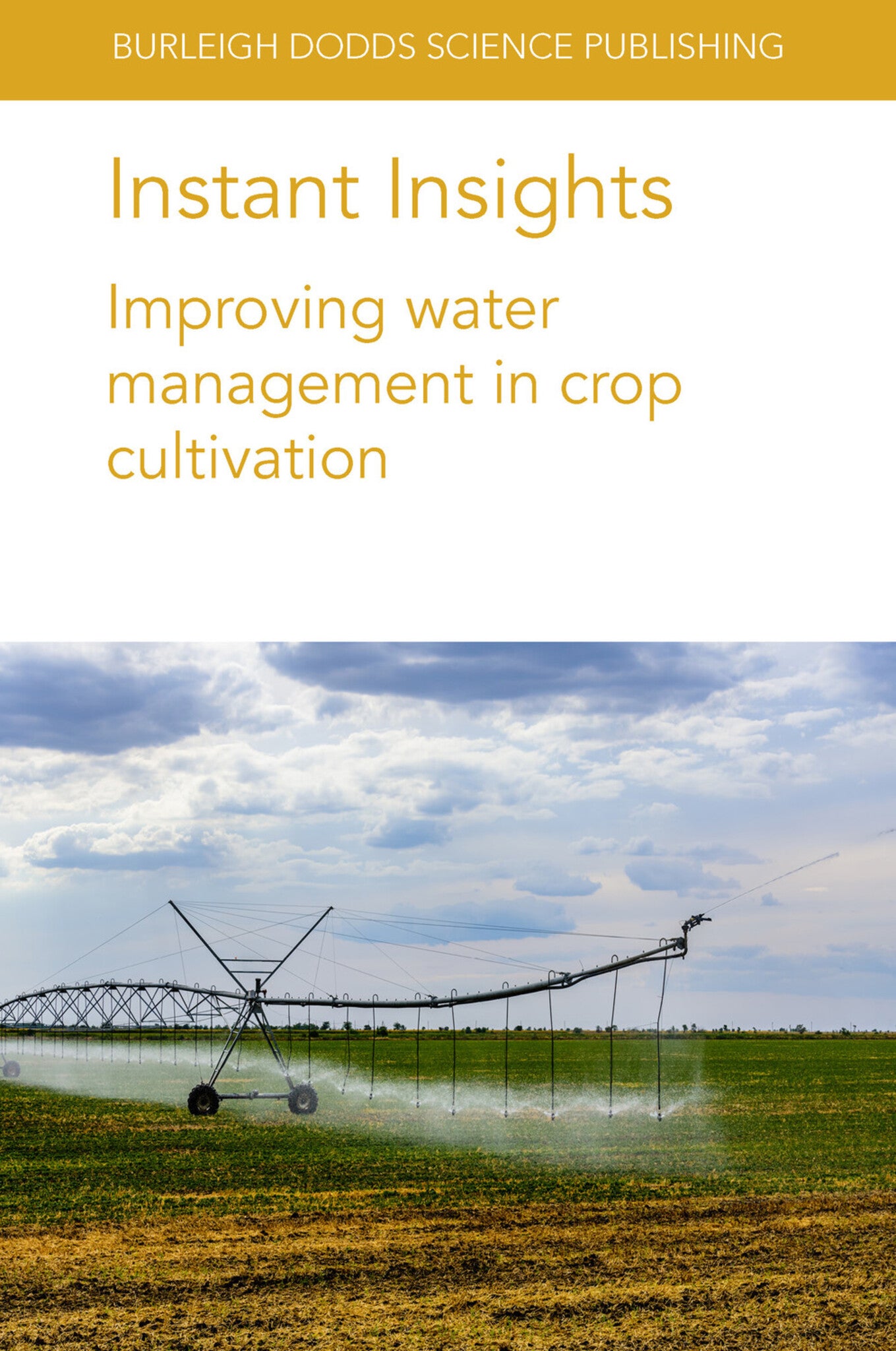We're sorry. An error has occurred
Please cancel or retry.
Instant Insights: Improving water management in crop cultivation

Some error occured while loading the Quick View. Please close the Quick View and try reloading the page.
Couldn't load pickup availability
- Format:
-
21 December 2021

This specially curated collection features five reviews of current and key research on improving water management in crop cultivation.
The first chapter focuses on site-specific variable rate irrigation systems utilised across agriculture and examines site-specific data acquisition and mining approaches, such as soil mapping and zone delineation.
The second chapter considers the main deficit irrigation strategies used in agriculture to improve crop water productivity. It also explores the status of site-specific irrigation management and its role in minimizing agricultural water use.
The third chapter reviews progress in winter wheat water management and water-use efficiency (WUE), drawing on long-term field experiments in the U.S. southern Great Plains. It discusses the key relationships between yield, evapotranspiration, WUE and best management practices.
The fourth chapter considers the key techniques for improving rice water productivity through enhanced irrigation practices aiming to reduce irrigation water use in rice cultivation, such as the Alternate Wetting and Drying technique.
The final chapter examines the main irrigation methods used in dryland sorghum production. It also reviews the relationship between soil properties and irrigation management.

TECHNOLOGY & ENGINEERING / Agriculture / Irrigation, Irrigation and water management, TECHNOLOGY & ENGINEERING / Agriculture / Sustainable Agriculture, TECHNOLOGY & ENGINEERING / Agriculture / Agronomy / Crop Science, Agronomy and crop production, Sustainable agriculture

Chapter 1 - Site-specific irrigation systems: Amir Hagverdi, University of California-Riverside, USA; and Brian G. Leib, University of Tennessee-Knoxville, USA; 1 Introduction 2 Field-level mapping of soil variability 3 Delineation of irrigation management zones 4 Quantifying the potential impact of variable rate irrigation 5 Site-specific irrigation management 6 Future trends and conclusion 7 List of abbreviations 8 Where to look for further information 9 References
Chapter taken from: Stafford, J. (ed.), Precision agriculture for sustainability, Burleigh Dodds Science Publishing, Cambridge, UK, 2018, (ISBN 978 1 78676 204 7)
Chapter 2 - Deficit irrigation and site-specific irrigation scheduling techniques to minimize water use: Susan A. O’Shaughnessy, USDA-ARS, USA; and Manuel A. Andrade, Oak Ridge Institute for Science and Education, USA; 1 Introduction 2 DI strategies: overview 3 DI strategies: approaches, risks and advantages 4 SSIM: achieving precision irrigation 5 Variable rate irrigation 6 Integration of plant feedback sensor systems for site-specific VRI control 7 Conclusions 8 Where to look for further information 9 Acknowledgements 10 Disclaimer 11 References
Chapter taken from: Oweis, T. (ed.), Water management for sustainable agriculture, Burleigh Dodds Science Publishing, Cambridge, UK, 2018, (ISBN 978 1 78676 176 7)
Chapter 3 - Improving water management in winter wheat: Q. Xue, J. Rudd, J. Bell, T. Marek and S. Liu, Texas A&M AgriLife Research and Extension Center at Amarillo, USA; 1 Introduction 2 Winter wheat yield 3 Yield determination under water-limited conditions 4 The role of measuring evapotranspiration (ET) 5 Water-use efficiency 6 Wheat yield, evapotranspiration (ET) and water-use efficiency (WUE) relationships 7 Case studies 8 Future trends and conclusion 9 Where to look for further information 10 References
Chapter taken from: Langridge, P. (ed.), Achieving sustainable cultivation of wheat – Volume 2: Cultivation techniques, Burleigh Dodds Science Publishing, Cambridge, UK, 2017, (ISBN 978 1 78676 020 3)
Chapter 4 - Advances in irrigation techniques for rice cultivation: D. S. Gaydon, CSIRO Agriculture, Australia; 1 Introduction 2 Water-saving measures 3 Scale-dependency of water productivity and water savings 4 Aerobic rice as a water-saving measure 5 Alternate wetting and drying (AWD) as a water-saving measure 6 Saturated soil culture (SSC) as a water-saving measure 7 Case study: water-saving irrigation in southeast Australia 8 Future trends and conclusion 9 Where to look for further information 10 References
Chapter taken from: Sasaki, T. (ed.), Achieving sustainable cultivation of rice – Volume 2: Cultivation, pest and disease management, Burleigh Dodds Science Publishing, Cambridge, UK, 2017, (ISBN 978 1 78676 028 9)
Chapter 5 - Improving water management in sorghum cultivation: Jourdan Bell, Texas A&M AgriLife Research and Extension, USA; Robert C. Schwartz, USDA-ARS Conservation and Production Research Laboratory, USA; Kevin McInnes, Texas A&M University, USA; Qingwu Xue and Dana Porter, Texas A&M AgriLife Research and Extension, USA; 1 Introduction 2 Dryland production 3 Irrigation 4 Deficit irrigation 5 Soils and irrigation management 6 Conclusion 7 Where to look for further information 8 References
Chapter taken from: Rooney, W. (ed.), Achieving sustainable cultivation of sorghum – Volume 1: Genetics, breeding and production techniques, Burleigh Dodds Science Publishing, Cambridge, UK, 2018, (ISBN 978 1 78676 120 0)



